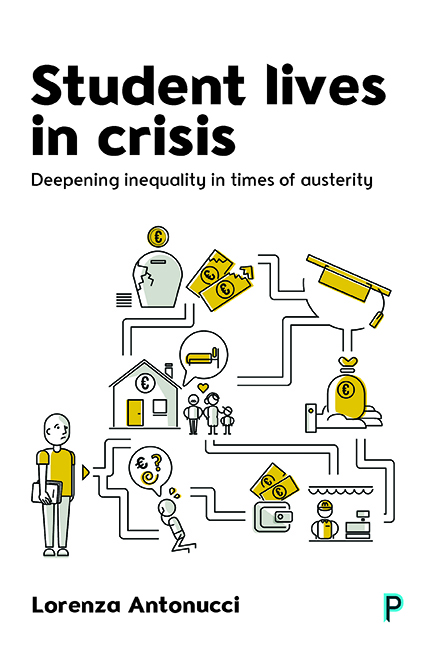Book contents
- Frontmatter
- Dedication
- Contents
- List of tables and figures
- List of acronyms
- Note on author
- Preface: A post-Brexit preface
- Acknowledgements
- Introduction: Young people’s lives at university in crisis
- Part 1 University for all? How higher education shapes inequality among young people
- Part 2 Exploring the inequality of university lives in England, Italy and Sweden
- Part 3 The ‘eternal transition’: young adults and semi-dependence in university
- Conclusion: Addressing growing inequality among young people in university
- Notes
- Annex
- Index
six - Explaining inequality: the role of social origins and welfare sources
Published online by Cambridge University Press: 05 April 2022
- Frontmatter
- Dedication
- Contents
- List of tables and figures
- List of acronyms
- Note on author
- Preface: A post-Brexit preface
- Acknowledgements
- Introduction: Young people’s lives at university in crisis
- Part 1 University for all? How higher education shapes inequality among young people
- Part 2 Exploring the inequality of university lives in England, Italy and Sweden
- Part 3 The ‘eternal transition’: young adults and semi-dependence in university
- Conclusion: Addressing growing inequality among young people in university
- Notes
- Annex
- Index
Summary
The previous chapter underlined the extent to which young people's lives appear to be different in university. The diversity of experiences does not per se explain the inequality of young people's experiences: in order to clarify the processes of inequality, we need to explore the role of structural factors, and two dominate in my understanding of young people's inequality in university. The first is the role of social origin or ‘class’, which is explored here in terms of socioeconomic background. This refers to parental educational attainment (the highest educational level reached by the young people's parents) and parental occupation (the work position of the young people's parents). This typology captures where young people come from, but says little about the process of the reproduction of inequality. In order to examine this process, we need to look, second, at the ‘welfare mix’ that, as explained in previous chapters, constitutes the ‘structures’ around young people's lives – in other words, the availability of family, state and labour market sources influences young people's individual experiences.
At this point a disclaimer is needed regarding what I decided not to focus on: a traditional (and very popular) way of understanding inequality among young people in university (at least in the UK) refers to the stratification between HE institutions (young people in old versus new universities). I have no doubt that this is an explanatory factor in determining different cultural experiences of university. My focus here, however, is on material differences in the way young people experience university. This research used a strategic sampling that takes into account stratification among HE institutions (see the Annex), but ultimately considers social origin, and in particular, welfare mixes, as the key drivers of the material reproduction of inequality in HE.
This chapter discusses the function of structural factors (class and welfare mixes) for each of the five profiles identified, providing an account of how inequality works in practice.
Struggling and hopeless’: young people without family support and working in precarious jobs
David, Jessica and Maria all come from families facing financial struggles, although their social origins are difficult to define. David's socioeconomic background is hard to define as his parents are volunteers, and although their occupations are not easy to categorise, they share the same condition as those employed in low-status occupations in terms of the availability of economic resources.
- Type
- Chapter
- Information
- Student Lives in CrisisDeepening Inequality in Times of Austerity, pp. 107 - 116Publisher: Bristol University PressPrint publication year: 2016



